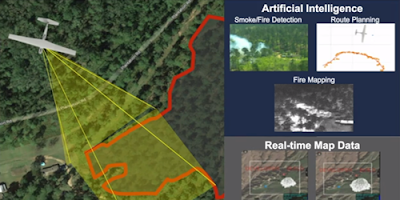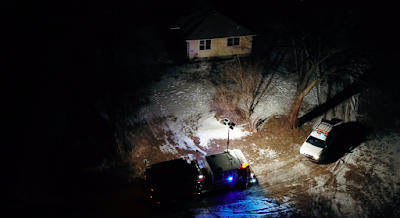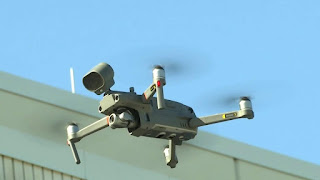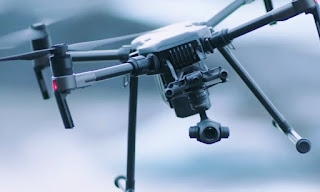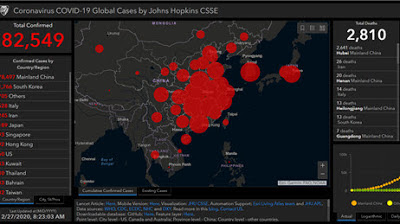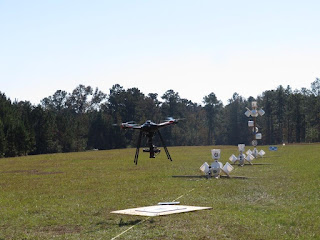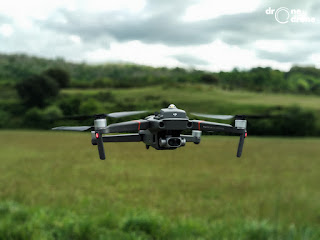Drones buzz like bees, hover like hummingbirds, and
accelerate like race cars. Besides being used for play, drones, properly known
as unmanned aircraft systems (UAS), have quickly become vital pieces of
technology for both private and public organizations. First responder organizations
rely more and more on them to enhance their response capabilities and better
execute their missions. But how can first responders be sure the drones they
are buying meet their specific mission needs?
The Department of Homeland Security (DHS) Science and
Technology Directorate (S&T) can help.
In November 2019, S&T’s National Urban Security
Technology Laboratory (NUSTL) assessed small, commercially available drones for
priority needs of first responders through its First Responder Robotic
Operations System Test (FRROST) program. The needs were identified by the
S&T First Responder Resource Group (FRRG), a volunteer working group of
experienced emergency response and preparedness professionals from across the
U.S. who guide research and development efforts. The assessment was performed
under realistic field conditions at Camp Shelby Joint Forces Training Center in
Mississippi.
“We are focused on the first responder community – fire,
police, and emergency management departments – and we are assessing small UAS,”
said Cecilia Murtagh, FRROST Project Manager. “They are much cheaper than
manned aircraft, which makes them an ideal tool for response agencies.”
S&T initiated the FRROST program in 2018 to help the
first responder community evaluate drones in real-world field conditions under
simulated scenarios to inform their purchases. FRROST is modeled after
S&T’s System Assessment and Validation for Emergency Responders (SAVER)
Program, managed by NUSTL. It assists emergency responders in making procurement
decisions by producing reports based on objective assessments and validations
of commercially available technology. FRROST focuses on drone technology and
uses assessment methods developed by the National Institute of Standards and
Technology (NIST).
In June 2018, a focus group of first responders,
experienced in piloting drones for different missions, convened to provide
evaluation criteria for the FRROST assessment. The focus group selected several
drones to be tested and evaluated in realistic field conditions.
Becoming the ‘right hand’ of first responder
organizations
D.J. Smith from Virginia State Police operates the remote
control of a Falcon 8+ drone by Intel. Small drones offer tremendous potential
for emergency response missions. Thanks to recent technology advances, they
have become more effective, more affordable and easier to fly. They can not
only keep responders safer, but also provide opportunities for missions
impossible for manned aircraft, such as exploring inside buildings and tunnels.
“Drones are a force multiplier for first responders,”
said Murtagh. “It gives them eyes on a situation quickly with generally less
manpower; for example, you could fly a drone over diverse terrain or wide areas
and try to find a lost hiker, which would be labor intensive for field teams.”
Law enforcement responders use drones for tactical
operations, building searches, traffic crash investigation, pursuit, and more.
For example, the Plano, Texas Police Department used a drone to look for an
armed suspect hidden in an apartment complex.
“The subject was actually firing rounds out of the
apartment, so we couldn't get close enough to look in,” said Lieutenant Glenn
Cavin of the Plano Police Department. “The UAS was able to look through the
window and provide intelligence.”
After floods, emergency managers use drones to survey
actual damage, so they send help where it is actually needed without risking
responders’ lives.
“We have launched our drone to find a missing older
adult,” said Randy Frank, Director of Marion County, Kansas Emergency Management.
Small counties like Marion use the same drones for multiple missions. “Drone
use is only limited to your imagination.”
Large counties like Orange County, California, need
different drones for their various terrains, including metro city, wildland-urban
boundary, harbors and more.
Tom Haus from the Los Angeles City Fire Department sets
up video to capture the operator interface while the participants fly the NIST
Test Methods.“During a brush fire, a drone can map out where the hot spots are,
thus helping the firefighters to put that hot area out,” said Frank Granados,
Firefighter Paramedic at the Orange County Fire Authority, CA.
First responders assessed drones at Camp Shelby
In November 2019, nine first responder drone pilots from
across the U.S., some of whom are quoted in this article, assessed four small
drones in fields and mock urban settings at Camp Shelby. The drones weighed
between 1.9 and 13.5 pounds. The pilots, with law enforcement, firefighting and
emergency management backgrounds, participated in three different search and
rescue scenarios: lost hiker (in an isolated field), post-flood disaster (in
the urban setting and an adjacent field) and a twilight scenario (in the urban
setting). The drones demonstrated different capabilities and participants
provided feedback to NUSTL after taking turns flying them. NUSTL coordinated
with NIST for this testing event, using a test course that NIST developed for
drone assessment and pilot training and testing.
“All participants are getting an opportunity to run the
drones through those standard test lanes to see how they match up against what
they would like to see in a mission ready, small unmanned aerial system,” said
Captain Tom Haus of the Los Angeles Fire Department, who assisted NIST with FRROST’s
standard testing and scenarios.
Falcon 8+ drone hovers over a car with a cluster of NIST
buckets to look for ‘stranded flood victims,’ as part of the FRROST search and
rescue scenario.Wooden stands stood in a wide field next to the urban setting at
Camp Shelby. Clusters of white two-gallon buckets like giant bell-shaped
blossoms adorned the stands. Other clusters were attached to windows, roofs,
and even a car. Inside each bucket on the bottom was a sticker with a letter
surrounded by a circle. Such stickers could be seen on other parts of the
buckets and poles. The drones had to hover over each bucket, like honeybees
over a flower, and take accurate pictures.
“These visual acuity tests, just like the eye charts at
the eye doctor, are designed to allow the operator to align his/her small
unmanned aerial system with that bucket” said Haus. “If you are not aligned,
the bucket itself keeps you from seeing into the bottom.”
Participants assessed how well the drones could be
stabilized, how easily they could be flown, and how well their payloads
functioned. Payloads included 30x zoom cameras for distant visualization and
thermal cameras for twilight and night.
During the twilight testing, drones demonstrated their
thermal imaging cameras and participants watched on a monitor what the drone
was ‘seeing.’ One of the pilots moved the drone vertically, hovered it over the
car, a roof and in front of a window, all with clusters of buckets. This
simulated how a drone could be operated to look for survivors after an
emergency or disaster, such as a hurricane.
NUSTL representative Cody Bronnenberg (right) records
feedback from UAS Trainer Coordinator Christopher Stockhowe (left) from the
Virginia Beach Fire Department after he flew the EVO drone by Autel Robotics.FRROST
took place over four days, with a different drone assessed each day. A large
drone with a 42-megapixel camera and an infrared camera was tested during the
last day. It was designed for professional inspection and surveying of bridges
and other areas. The first responder evaluators determined that it could be
paired together with a smaller, faster drone. In this scenario, the evaluators
used the large drone for overall incident awareness and then used a smaller
drone for closer inspection.
Future outlook
The feedback provided by participants in the FRROST event
will be documented in a final assessment report and shared nationally with the
first responder community. NUSTL’s report will provide unbiased results that
can help first responder organizations with their procurement decisions.
Moving forward, another S&T project called Joint
Unmanned Systems Testing in Collaborative Environment, or JUSTICE, assesses
drones and sensors for the Homeland Security Enterprise. JUSTICE is managed by
the S&T Air Based Technologies Program and a team of experts from the
Mississippi State University Raspet Flight Research Laboratory.
“Putting the drone in your hand, running it through its
paces, seeing how it performs in a real scenario helps me determine if that's
going to fit our mission and save us money,” said D.J. Smith, Technical
Surveillance Agent with the Virginia State Police. “That’s critical for us.”



